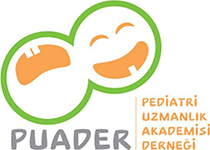Rotavirus infection-associated immune thrombocytopenic purpura
Osman Yeşilbaş1 , Esra Demirok Özalp2
, Esra Demirok Özalp2 , Serkan Atıcı3
, Serkan Atıcı3 , Emine Betül Tavil4
, Emine Betül Tavil4 , Ahmet Soysal5
, Ahmet Soysal5
1Ataşehir Memorial Hospital, Department Of Pediatrics And Division Of Pediatric Critical Care Medicine, İstanbul, Türkiye
2Ataşehir Memorial Hospital, Department of Pediatrics, İstanbul, Türkiye
3Okan University, School of Medicine, Department of Pediatrics and Division of Pediatric Infectious Diseases, İstanbul, Türkiye
4Ataşehir Memorial Hospital, Department of Pediatrics and Division of Pediatric Hematology, İstanbul, Türkiye
5Ataşehir Memorial Hospital, Department of Pediatrics and Division of Pediatric Infectious Diseases, İstanbul, Türkiye
Keywords: Rotavirus, gastroenteritis, immune thrombocytopenic purpura
Abstract
Background: Rotavirus infection, especially gastroenteritis with severe vomiting, may cause critical and potentially life-threatening dehydration. Extraintestinal involvement related to rotavirus infection is rarely documented. Immune thrombocytopenic purpura (ITP) may occur after some viral infections; however, its association with wild-type rotavirus gastroenteritis has rarely been reported, in only a few cases.
Case Presentation: A previously healthy 3-year-old girl presented to the pediatric emergency department with high-grade fever, fatigue, watery-bloodless diarrhea, and vomiting. Her vital signs, physical examination, and laboratory results were all consistent with severe dehydration secondary to gastroenteritis. The enzyme immunoassay test was positive for rotavirus and was detected without leukocyte and erythrocyte in the microscopic examination of the stool. Scattered petechiae were observed on her body two days later, and platelet counts gradually dropped to 4.000/mm3. The diagnosis of ITP secondary to rotavirus gastroenteritis was established based on the patient's history, physical examination,laboratory results, and peripheral blood smear findings. Her platelet counts gradually rose to 63.000/mm3 within the next two days after a single 1 g/kg intravenous immunoglobulin therapy. Four days after discharge, the follow-up revealed that her platelet counts increased to 594.000/mm3.
Conclusions: Rotavirus infections are prevalent in childhood, and it should be kept in mind that autoimmune diseases, such as ITP, may be precipitated by rotavirus infection.
Introduction
Immune thrombocytopenic purpura (ITP) is an acquired autoimmune disease characterized by isolated thrombocytopenia resulting from autoantibodies against platelet antigens. Although the precise pathophysiology of ITP remains unclear, vaccinations and infectious diseases recognized as potential triggers of autoimmunity and contributors to disease pathogenesis (1, 2). In the literature, it is proposed that rotavirus infection might be one of the infrequent underlying causes of the development of ITP in children (2-4). Herein, we aim to report a rare pediatric case with concomitant rotavirus gastroenteritis and ITP. We address issues, such as whether the coexistence of ITP with severe thrombocytopenia and rotavirus gastroenteritis, could result in complications, such as gastrointestinal hemorrhage.
Case Report
A previously healthy 3-year-old girl presented to the pediatric emergency department with high-grade fever and fatigue for the last 18 hours, watery-bloodless diarrhea, and vomiting that developed in the eight hours before admission. Her medical and family history were unremarkable except for missed rotavirus vaccination. On physical examination, she had a temperature of 39.6°C, a heart rate between 145 and 170 beats/min, a respiratory rate of 32 breaths/min, and a blood pressure of 90/50 mmHg. She was severely dehydrated; bowel sounds were increased with mild tenderness in the lower abdominal quadrants. Abdominal defense and rebound were not detected. Her laboratory results were as follows: white blood cell: 27.000/mm3, hemoglobin: 15.6 g/dL, platelet: 302.000/mm3, urea: 64 mg/dL (normal: 15-36 mg/dL), and creatinine: 0.98 mg/dL (normal: 0.3-0.7 mg/dL). C-reactive protein, electrolytes, and the other biochemical analyses (including lactate dehydrogenase-LDH) were unremarkable except for mild metabolic acidosis in her venous blood gas analysis. The enzyme immunoassay test was positive for rotavirus without leukocyte and erythrocyte in the microscopic examination of the stool. The patient was hospitalized due to impaired serum kidney function tests secondary to dehydration, ongoing diarrhea, vomiting, high fever, and poor oral intake. Intravenous fluid therapy, paracetamol (if necessary), and probiotics were administered. Her serum kidney function tests gradually improved without any electrolyte imbalance. Two days later, scattered petechiae were observed on her body, and platelet counts gradually dropped to 4.000/mm3. Normochromic and normocytic red blood cells without schistocytes, single and giant platelets were observed in all areas, and no blasts were found on the peripheral blood smear. The coagulation studies, complement factors, liver functions, and immunoglobulin levels were all within normal limits; serologies for Epstein-Barr virus, cytomegalovirus, Parvovirus-B19, and Direct Coomb's test were all negative. The diagnosis of ITP secondary to rotavirus gastroenteritis was established based on the patient's history, physical examination, laboratory results, and peripheral blood smear findings. A single 1 g/kg intravenous immunoglobulin was administered, and her platelet counts gradually rose to 63.000/mm3 within the next two days. She was discharged on the fifth day of hospitalization with recommendations for close follow-up. Four days after discharge, it was seen that her platelet counts increased to 594.000/mm3.
Discussion
Pediatric ITP is rare and seems to be benign. Although the precise origin of ITP is still unknown, infection is widely thought to play a significant part in the disease's pathophysiology. More and more data lately point to a possible link between viral infections and ITP (2). Rotavirus is a double stranded RNA virus from the Reoviridae family that was first described in 1973 (5). The primary causative agent of diarrhea in infants and children worldwide is human rotavirus. Nonetheless, previous research has shown that rotavirus infection is not exclusive to the gastrointestinal system. Patients and animals with rotavirus infections are frequently reported to have viremia and other systemic illnesses. Moreover, an autoimmune disease's etiological culprit may be rotavirus infection (2, 6).
There is a scarcity of published data about rotavirus infection as an underlying causative agent of ITP (2-4). A retrospective study (2), included 601 children hospitalized for diarrhea, investigated the association between rotavirus infection and the incidence of ITP in children. Simultaneous ITP occurred in 21 (14.58%) patients among the children in the rotavirus-positive group compared with 33 (7.22%) patients without rotavirus infection. The authors have also stated that the children presenting with ITP concomitant rotavirus infection were significantly younger than the ITP patients without rotavirus infection (2). Siddiqui et al. (3) presented a 5-month-old child who presented with severe gastrointestinal bleeding secondary to ITP. ITP developed following acute rotavirus gastroenteritis in that patient after having a second dose of the oral pentavalent rotavirus vaccine. This patient responded well to treatment and his gastrointestinal bleeding improved (3). Özdemir et al. (4) also reported a three-year-old male patient diagnosed with rotavirus gastroenteritis and ITP, similar to our case. Our patient also responded well to treatment and recovered without bleeding. To the best of our knowledge, our report is the third case report about the link between ITP and rotavirus infection.
Conclusion
Rotavirus infections are pretty common in childhood, and it should be kept in mind that autoimmune diseases, such as ITP, may be triggered during this disease. When we analyzed the limited number of published studies in the literature about concomitant rotavirus gastroenteritis and ITP, it was observed that the disease responds well to treatment without causing any bleeding, such as severe gastrointestinal tract bleeding.
Cite this article as: Yeşilbaş O, Demirok Özalp E, Atıcı S, Tavil EB, Soysal A. Rotavirus infection-associated immune thrombocytopenic purpura. Pediatr Acad Case Rep. 2025;4(3):55-7.
The parents’ of this patient consent was obtained for this study.
The authors declared no conflicts of interest with respect to authorship and/or publication of the article.
The authors received no financial support for the research and/or publication of this article.
References
- Schifferli A, Cavalli F, Godeau B, Liebmanet HA, et al. Understanding Immune Thrombocytopenia: Looking Out of the Box. Front Med (Lausanne) 2021; 8: 613192.
- Ai Q, Yin J, Chen S, Qiao L, et al. Rotavirus-associated immune thrombocytopenic purpura in children: A retrospective study. Exp Ther Med 2016; 12(4): 2187-90.
- Siddiqui AH, Chitlur MB. Immune thrombocytopenic purpura in a 5-month-old female with rotavirus infection. Pediatr Blood Cancer 2010; 54(4): 633.
- Özdemir Ö, Sürücü M, Bucuk A, Çetin AF. A case of rotavirus infection-associated immune thrombocytopenic purpura. İzmir Dr. Behçet Uz Çocuk Hast. Dergisi 2012; 2(1): 28-31.
- Chizhikov V, Wagner M, Ivshina A, Hoshino Y, et al. Detection and genotyping of human group A rotaviruses by oligonucleotide microarray hybridization. J Clin Microbiol 2002; 40: 2398-407.
- Ramig RF. Pathogenesis of intestinal and systemic rotavirus infection. J Virol 2004; 78: 10213-20.

